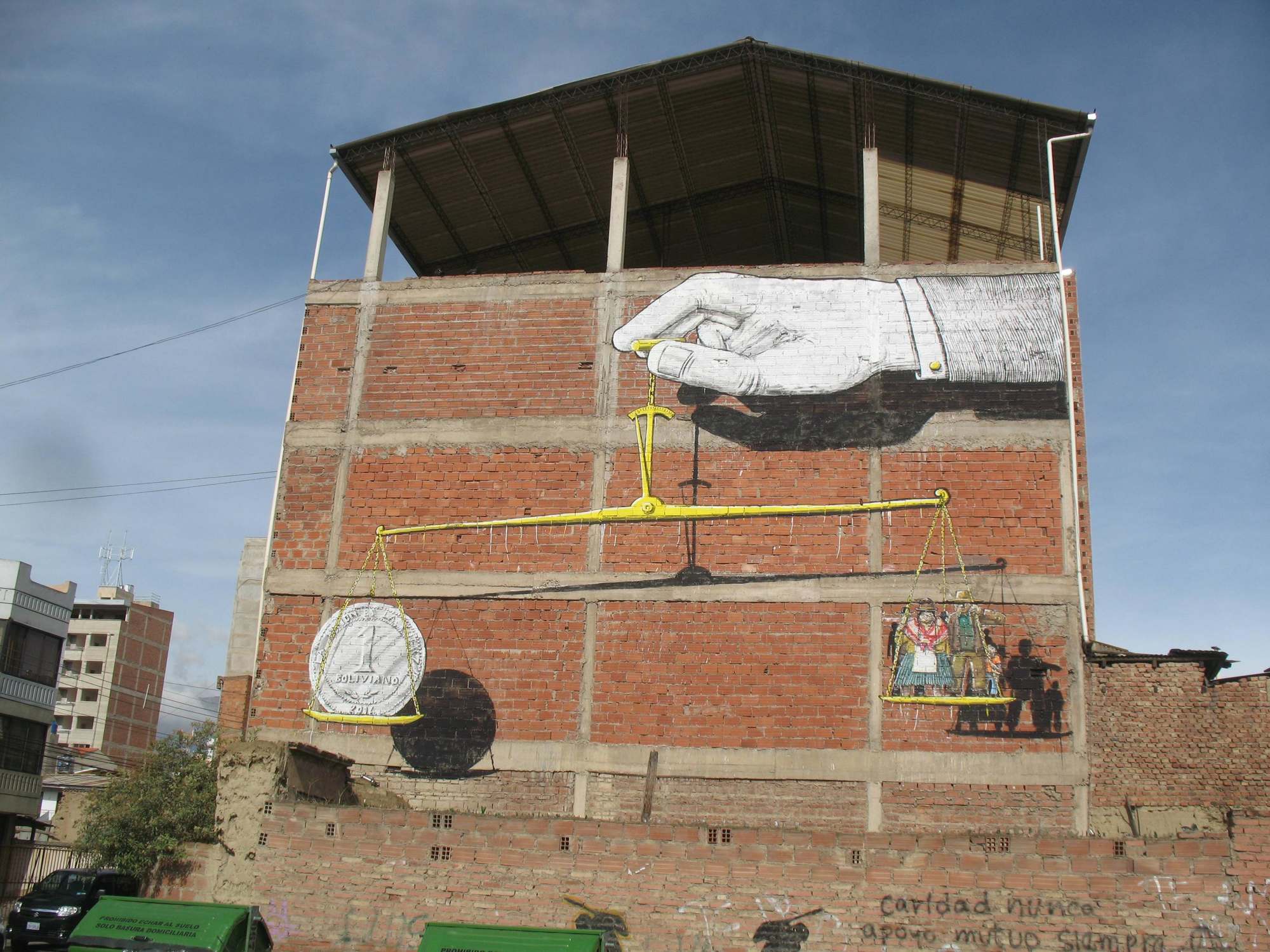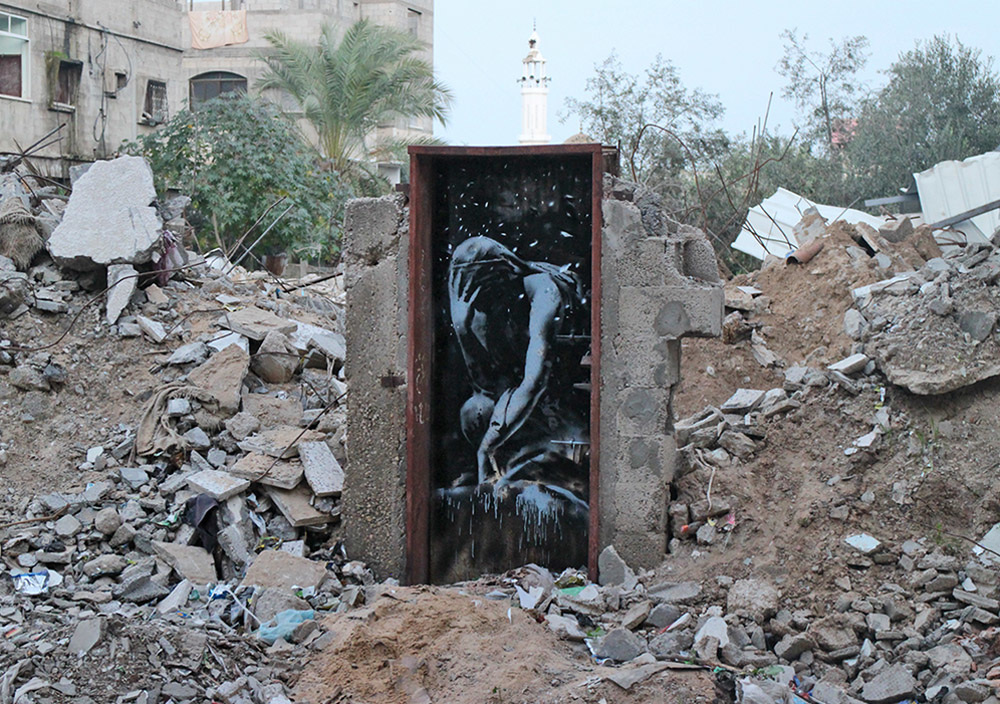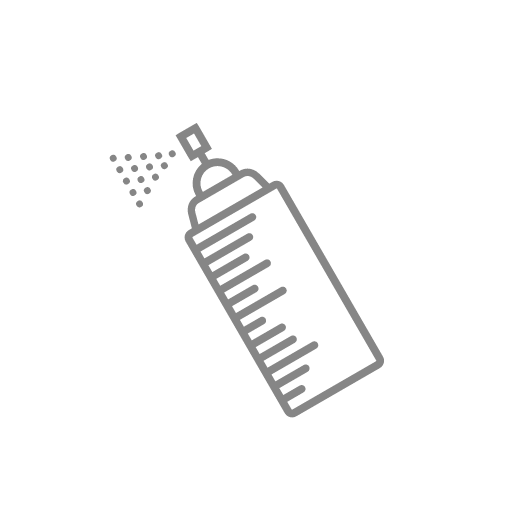
Blu in Bolivia; Blu's creates consistently powerful social commentary
We live in tough times.
2016 has been a challenging year, when we’ve been confronted with massive and growing systemic challenges (climate change, economic inequality, mass migration… the list could go on), alongside rising fear and intolerance (racism, nationalism and extremism as expressed in Farage, Le Pen, Trump and others). At the same time, trust in governments, companies, the media — and in each other—is at an all time low.
In this turmoil, the voice of artists becomes even more critical, and not just in the traditional confines of art—we need art to bring humanity and social commentary beyond galleries and traditional media to reach people where they are: moving about their daily lives.
We need powerful, emotional, thought-provoking, empathy-inducing and action-inspiring art in the streets more than ever.
______

Luzinterruptus in London; a piece about our disposable culture (from a distance these fountains look beautiful, up close they are filled with plastic trash)
When I started unurth in 2008, it started as an outlet for the excitement that had been building in me for art I’d been seeing in the world’s cities for ten years or so. I had grown up seeing graffiti, and not paying much attention to art in the streets until I started noticing powerful, provocative pieces in my neighborhood in London, including Banksy’ Fallen Angel in an abandoned doorway on my street.
What started as a place for my own photography quickly evolved to being an outlet for artists documenting and sharing their work, and some other photographers. Within a few years, the energy I felt for street art had only grown, and I was happy that unurth helped stoke the energy in the scene. Hundreds of thousands of people per month visited and there was so much great art flooding my inbox that it became hard to keep up with it: an abundance of beauty, energy, provocation, vulnerability and social commentary. To get an idea, just look at the work of Blu, Banksy or Roa, or the work in Spain, Mexico or Brazil.
*An irony of this piece: one of the reasons I wanted to start unurth was a desire for a ‘pure’ street art site, without distracting commentary and interpretation.
Around 2012/13 I began losing energy for it. Looking back I think two things happened. One was that I helped start enso, a mission-driven creative studio setting out to create massive positive impact in the world. enso became a channel for what energy I had for improving the world around me.
But something else happened too: street art became a significant business, dominated by major festivals and heavily commercialized print production. The big festivals offered the most renowned artists stable income and legal, big walls, and print production offered some financial stability beyond the gallery system. At first this was exciting to me, as artists now had the time, space and resources to create ever-more impactful pieces. But something was lost in the transition: the raw power of artists expressing something without consideration to city planners, art curators and print buyers. In many cases, ‘street art’ became city decoration and recycled pop art.
The times when I felt an immediate, gut-wrenching, mind-opening, soul-uplifting shot when I opened my inbox became fewer. Impressive scale replaced emotional impression.
So I’ve been posting less, and my subjective opinion is that there’s less energy on the streets I visit, and in the ‘street art’ scene generally. Google trends suggest this is more than just my interpretation.
______
In this low-empathy, low-trust, rising-fear moment, there’s a need and opportunity for art in the streets like never before. We need artists to jolt our ‘business as usual’ slide into intolerance and disconnection. We need more of those times that street art pops up in surprising, pause-inducing ways. We need artists to hold a mirror up to cultural forces, and we need artists to create antidotes to the fear-saturated divisive media landscape. And, we need artists to bring us out from behind our screens, to get us talking about things that matter, or even just get us talking about that amazing _____ we saw on the way to work. Tony Hsieh’s premise behind investing in public art is that it creates ‘collisions’ of people connecting around pieces, leading to serendipitous connections, leading to stronger community.
In this hyper-connected, hyper-disconnected moment, the most primitive form of social media in existence—the wall that expresses something of our shared humanity—is what we need. Churchill had the Ministry of Information; we need a distributed culture of public expression.
______
But this is not just a call to action to artists. Creating art in the streets involves real sacrifice from people putting themselves out there: risking critique, legal and financial implications. Street art requires a level of commitment that is under appreciated.
So my call to action is not just to those few brave souls who consider themselves ‘street artists’, it’s to all the rest of us that either should express something in public, or could help others express something in public. That could be in many ways, from giving encouragement, or giving permission for a wall you own, or giving space if you own some form of media; have a conversation with an artist about how they might do something socially constructive with resources you could offer. Fostering free expression should be a mass-participation exercise.
And my commitment: I’m going to start paying more attention to my unurth inbox again, and posting the work that feels important for this moment.
— Sebastian
originally published on Medium

Banksy in Gaza
Tweet
© unurth
